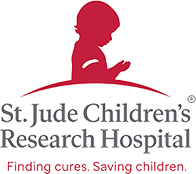
When people think about life insurance, they often focus on income replacement or protecting loved ones after death. But life insurance is also one of the most effective estate planning tools available. It can provide liquidity, equalize inheritances, and ensure your legacy is carried out as you intended.
This Life Insurance Awareness Month, let’s explore how life insurance fits into a well-rounded estate plan.
Why Estate Planning Matters
Estate planning isn’t just for the wealthy—it’s about making sure your assets are transferred smoothly, fairly, and with as little stress as possible. Without proper planning, heirs may face delays, legal costs, or even disputes. Life insurance offers a unique way to simplify this process.
How Life Insurance Supports Estate Planning Read More

You’ve done something incredibly important: you made your will or set up a trust. That step alone puts you ahead of many Americans. But don’t stop there—your estate plan isn’t complete until you’ve taken a few more key actions to ensure your wishes are truly honored.
This article walks you through the next moves to take after you’ve signed your documents.
Step 1: Safely Store Your Documents
Read More

When people think of estate planning, they usually picture wills, trusts, and dividing up their assets. But your legacy isn’t just about what you leave behind—it’s also about what you leave within the people you love.
During Make-a-Will Month, we’ve talked about the legal tools that help protect your assets. Now, let’s talk about the tools that help protect your wisdom, memories, and values—the intangibles that define who you are and how you want to be remembered.
What Is a Legacy Letter or Ethical Will?
Read More

Writing your will online might seem like the easy, affordable solution. With just a few clicks and a credit card, you can “check estate planning off the list.”
But here’s the truth: a DIY will can cost your family far more than you save today.
During Make-a-Will Month, it’s essential to understand that estate planning is not one-size-fits-all. Especially in retirement, with more assets and life complexities in play, a basic will template may not protect what matters most.
What Is a DIY Will?
Read More

You’ve created a will. You might even have a trust. But if you want to keep your estate out of court and make life easier for your family, there’s one more set of tools you need to know about:
Transfer on Death (TOD) and Payable on Death (POD) designations.
These powerful (and often free) tools help you pass property, money, and investments directly to your loved ones—without the delays or costs of probate. And during Make-a-Will Month, they’re an essential part of completing your legacy plan.
What Are TOD and POD Accounts?
TOD and POD are simple legal instructions you can add to certain financial accounts or assets. They tell your financial institution who should receive the asset when you pass away. Read More

You’ve built a retirement plan to last the rest of your life. But what about after?
Without a plan for how your assets transfer to your loved ones, they may be forced to deal with court delays, legal fees, and emotional stress—at the worst possible time.
That’s where probate comes in. It’s a process many people don’t understand until they’re caught in the middle of it.
As part of Make-a-Will Month, we’re breaking down what probate is, why people try to avoid it, and the smart moves you can make now—using wills, trusts, annuities, and life insurance—to protect your family and preserve your legacy.
What Is Probate?
Read More

Naming Beneficiaries the Right Way: Protecting Your Legacy with Life Insurance, Annuities, and a Will
You’ve created a will. You’ve outlined your wishes. But are you confident that your assets will actually end up where you want them to?
If you’re like many retirees, the answer might be: not entirely.
That’s because even the best-written will can be overridden by outdated, missing, or mismatched beneficiary designations. In fact, one of the most common (and costly) estate planning mistakes is overlooking how life insurance and annuities pass after death.
During Make-a-Will Month, we’re not just focused on documents—we’re focused on protecting what matters most. That means understanding the powerful role beneficiaries play in your estate plan—and how tools like life insurance and annuities can help you pass wealth directly and avoid probate. Read More

You’ve spent decades building your nest egg, protecting your income, and planning for retirement. But what about planning for what happens after you’re gone?
For many retirees, this brings up a key question:
What’s the difference between a will and a trust—and do I need both?
The truth is, while they’re both essential estate planning tools, a will and a trust serve very different purposes. Knowing how each works—and when to use them—can help you protect your assets, minimize court involvement, and make life easier for your loved ones. Read More

You’ve worked a lifetime to build security for yourself and your loved ones. But without a will, your legacy might not go where you think it will.
If you die intestate—the legal term for dying without a valid will—your estate is handed over to the state probate court system, and distribution follows your state’s intestacy laws.
That means you lose control, and your loved ones could face unexpected consequences, delays, or even disputes. Read More

You’ve saved, invested, and strategized your way to a secure retirement. But what happens next?
If you’ve already mapped out your Social Security timeline, estimated your healthcare costs, and created a retirement income plan—congratulations. You’ve achieved what many never do: retirement readiness.
But there’s one more step that completes the picture—and that’s legacy readiness.
August is Make-a-Will Month, and it’s the perfect time to address the question so many retirees forget to ask: Read More


















